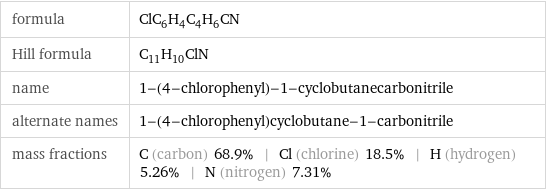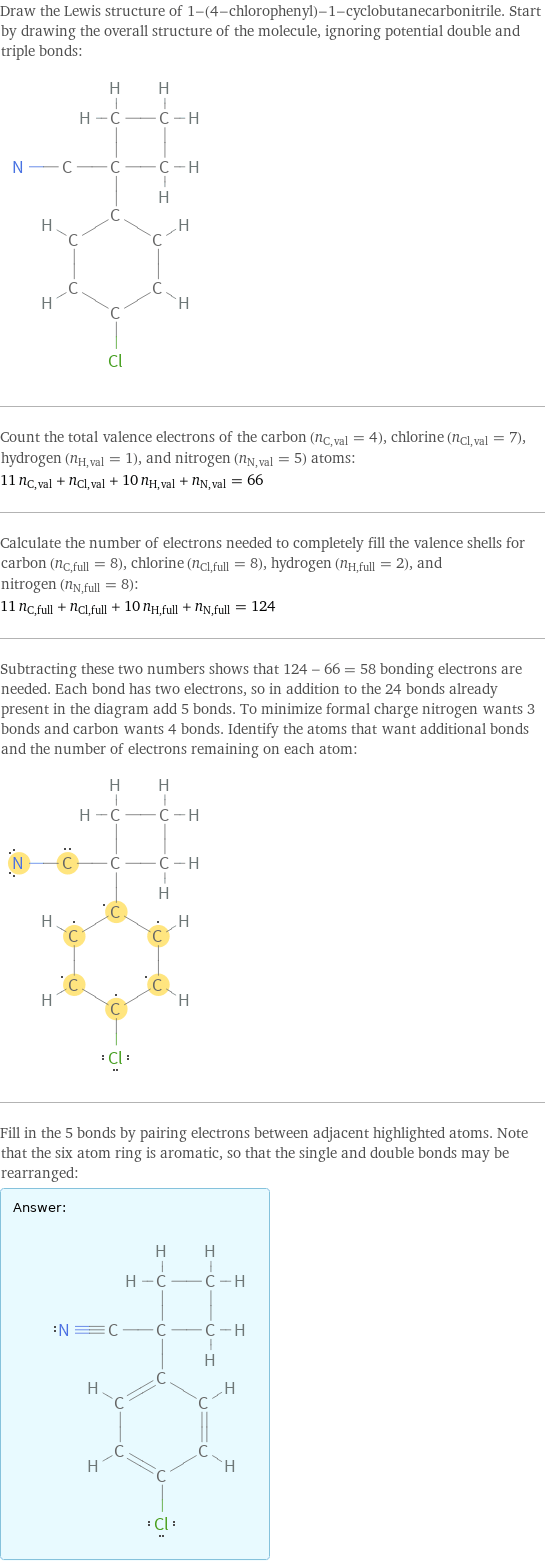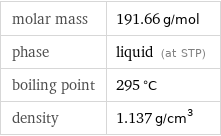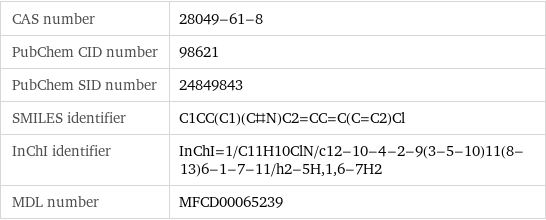Input interpretation

1-(4-chlorophenyl)-1-cyclobutanecarbonitrile
Chemical names and formulas

formula | ClC_6H_4C_4H_6CN Hill formula | C_11H_10ClN name | 1-(4-chlorophenyl)-1-cyclobutanecarbonitrile alternate names | 1-(4-chlorophenyl)cyclobutane-1-carbonitrile mass fractions | C (carbon) 68.9% | Cl (chlorine) 18.5% | H (hydrogen) 5.26% | N (nitrogen) 7.31%
Lewis structure

Draw the Lewis structure of 1-(4-chlorophenyl)-1-cyclobutanecarbonitrile. Start by drawing the overall structure of the molecule, ignoring potential double and triple bonds: Count the total valence electrons of the carbon (n_C, val = 4), chlorine (n_Cl, val = 7), hydrogen (n_H, val = 1), and nitrogen (n_N, val = 5) atoms: 11 n_C, val + n_Cl, val + 10 n_H, val + n_N, val = 66 Calculate the number of electrons needed to completely fill the valence shells for carbon (n_C, full = 8), chlorine (n_Cl, full = 8), hydrogen (n_H, full = 2), and nitrogen (n_N, full = 8): 11 n_C, full + n_Cl, full + 10 n_H, full + n_N, full = 124 Subtracting these two numbers shows that 124 - 66 = 58 bonding electrons are needed. Each bond has two electrons, so in addition to the 24 bonds already present in the diagram add 5 bonds. To minimize formal charge nitrogen wants 3 bonds and carbon wants 4 bonds. Identify the atoms that want additional bonds and the number of electrons remaining on each atom: Fill in the 5 bonds by pairing electrons between adjacent highlighted atoms. Note that the six atom ring is aromatic, so that the single and double bonds may be rearranged: Answer: | |
3D structure

3D structure
Basic properties

molar mass | 191.66 g/mol phase | liquid (at STP) boiling point | 295 °C density | 1.137 g/cm^3
Units

Liquid properties (at STP)

density | 1.137 g/cm^3 refractive index | 1.548
Units

Chemical identifiers

CAS number | 28049-61-8 PubChem CID number | 98621 PubChem SID number | 24849843 SMILES identifier | C1CC(C1)(C#N)C2=CC=C(C=C2)Cl InChI identifier | InChI=1/C11H10ClN/c12-10-4-2-9(3-5-10)11(8-13)6-1-7-11/h2-5H, 1, 6-7H2 MDL number | MFCD00065239
Safety properties

flash point | 110 °C